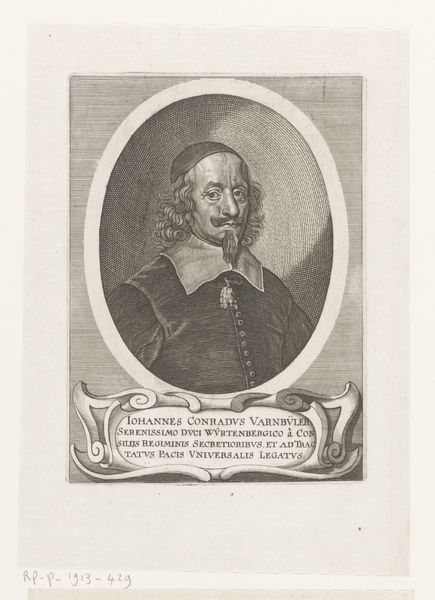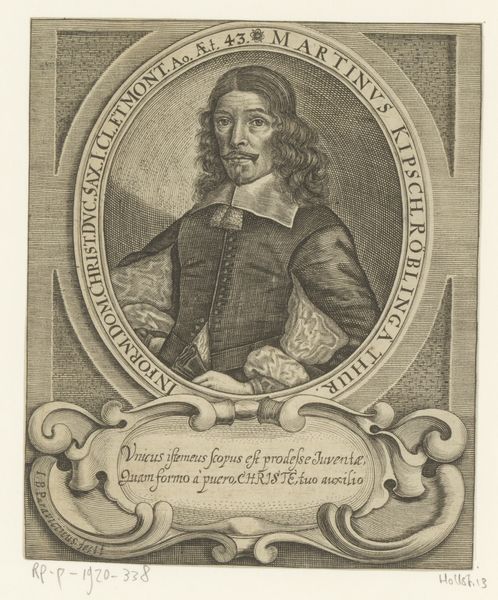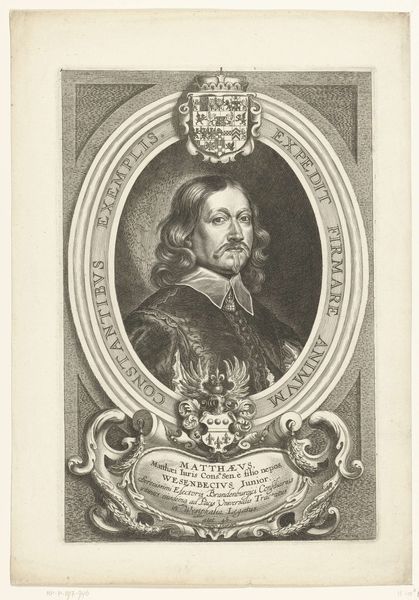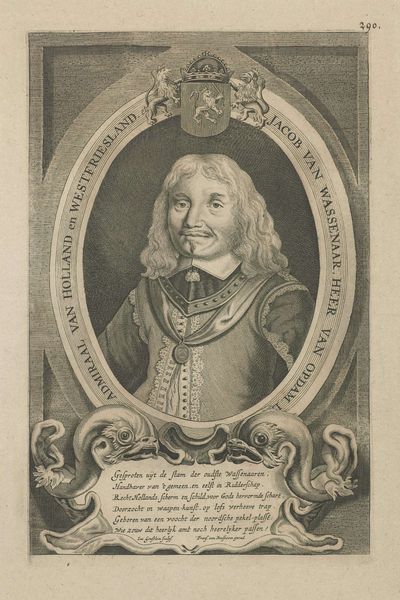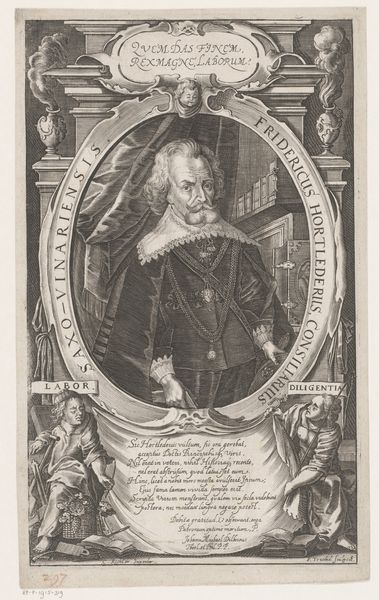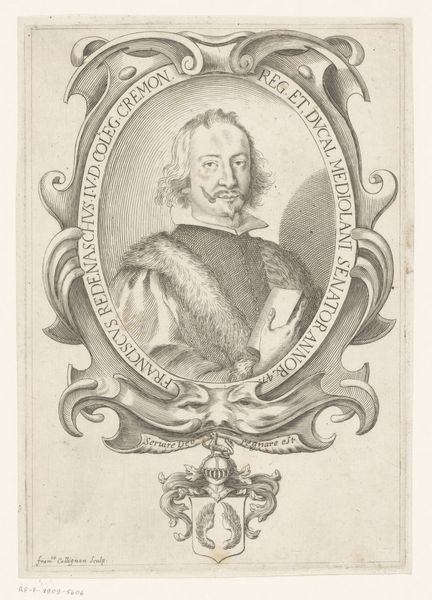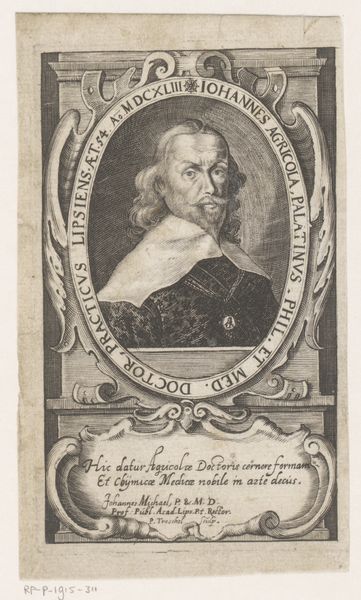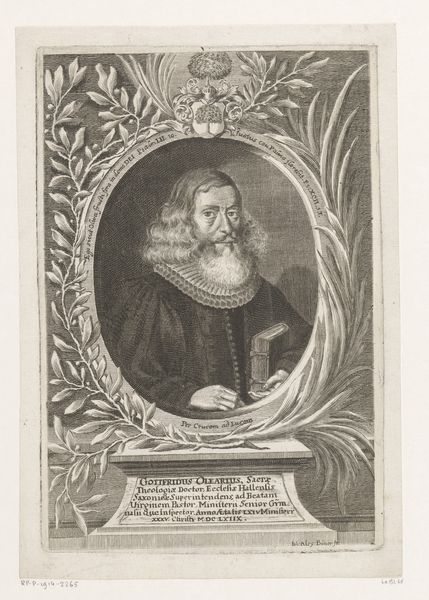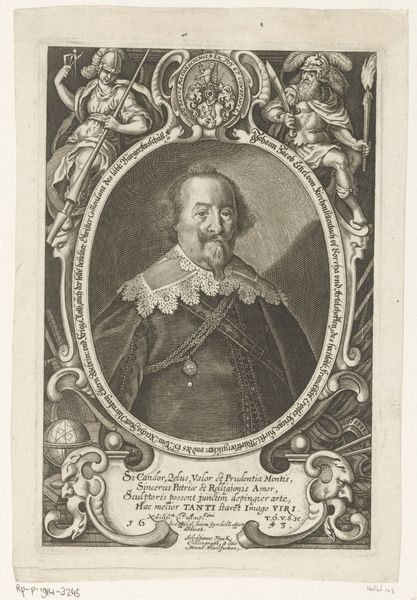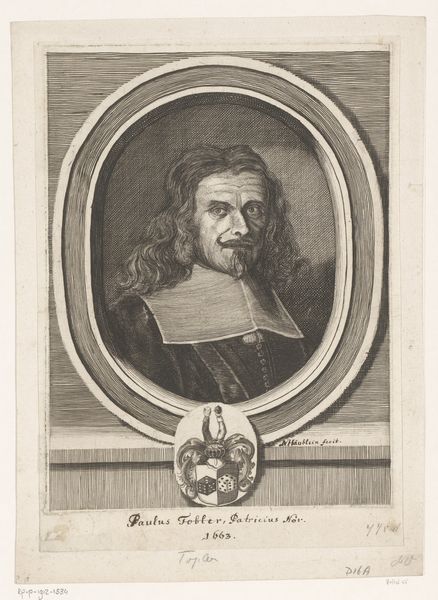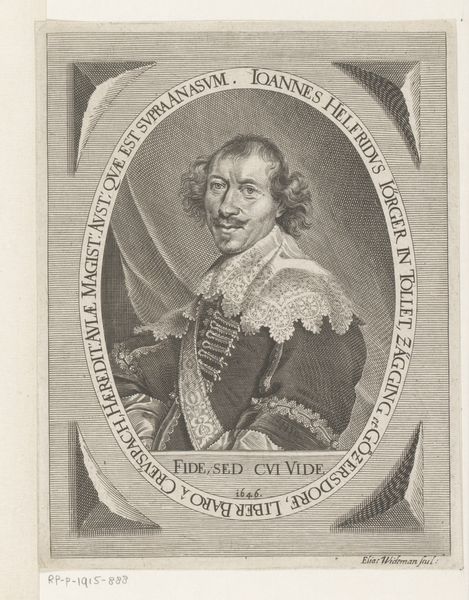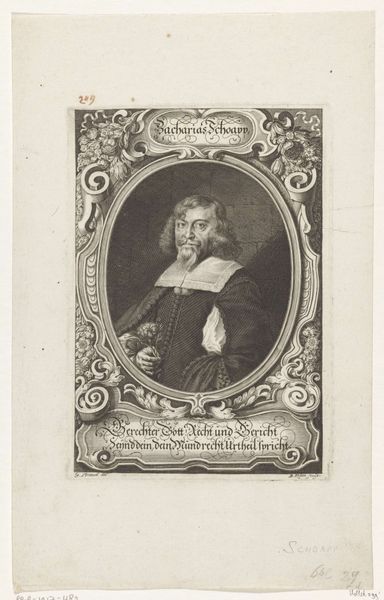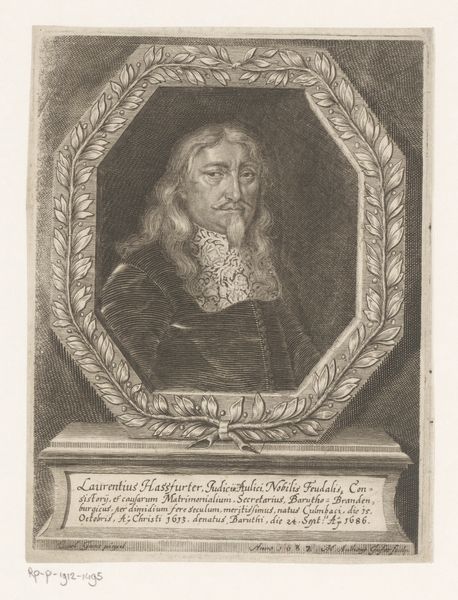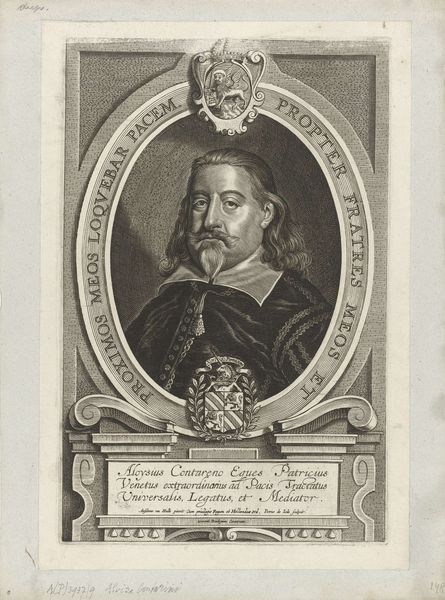
print, engraving
#
portrait
#
baroque
# print
#
old engraving style
#
traditional media
#
history-painting
#
engraving
Dimensions: height 257 mm, width 165 mm
Copyright: Rijks Museum: Open Domain
Editor: We’re looking at a print titled "Portret van Philipp Valentin Voit von Rieneck" by Johann (I) Salver, created in 1713. The work seems very ornate, with an oval portrait surrounded by text and heraldic symbols. It gives me a feeling of formality, but also hints at the subject's societal importance. How would you interpret this piece? Curator: This engraving offers a glimpse into the public role of portraiture in the Baroque era, specifically its function in constructing and perpetuating social status. Think about how the arrangement of coats of arms signifies lineage, land ownership and, ultimately, power. Editor: So the surrounding elements are as important as the portrait itself? Curator: Precisely. This isn't simply an image of an individual, but a carefully crafted presentation of status and affiliation. The text itself further reinforces the subject’s virtue and contributions, solidifying his legacy within the cultural and political landscape of the time. How do you think its dissemination affected its historical impact? Editor: Well, being a print, it allowed for wider distribution. Was it a common practice to reproduce portraits in this way, extending the reach of someone's image and therefore, their influence? Curator: Absolutely. Prints like this functioned almost as public relations, broadcasting the image and associated narratives to a broader audience, thus shaping public perception and reinforcing established hierarchies. What do you make of the elaborate frame around the portrait? Editor: It really amplifies the sense of importance. Seeing this print helps me realize that even artistic depictions have strong connections with societal structures. Curator: Indeed. This piece reminds us to critically examine how museums and galleries actively participate in preserving not only cultural memory but also narratives that benefit certain institutions. Editor: I’ve never considered prints like this as tools of influence before, it gives me a different perspective on art’s relationship to power.
Comments
No comments
Be the first to comment and join the conversation on the ultimate creative platform.
